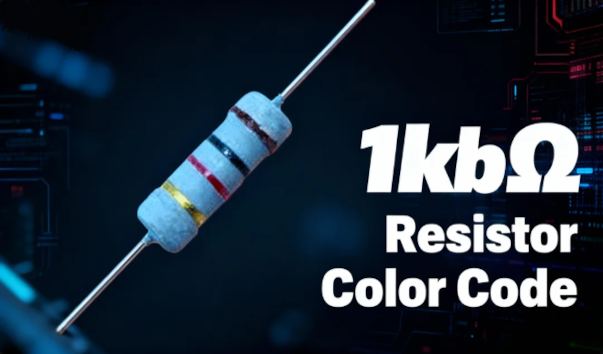Banana and Tip Connectors
Banana and Tip Connectors: A Brief Overview
Definition:
Banana and tip connectors are specialized types of electrical connectors commonly used in audio and video equipment, as well as in various electronic devices. They are designed to provide a secure and reliable connection between components, ensuring signal integrity and minimizing the risk of electrical noise.
Function:
1. Banana Connectors: These connectors are characterized by their cylindrical shape and are typically used for speaker wire connections. They offer a quick and easy way to connect and disconnect audio equipment without the need for soldering. Banana connectors are often used in home theater systems, professional audio setups, and high-fidelity audio equipment.
2. Tip Connectors: Also known as spade connectors, these have a flat, pointed end that can be inserted into a socket or connected to another spade connector. They are commonly used for grounding purposes in audio systems and for connecting speaker wires in a daisy-chain configuration.
Applications:
- Audio Systems: Both banana and tip connectors are widely used in speaker wire connections, allowing for easy setup and adjustments in home and professional audio systems.
- Video Equipment: They can also be found in video equipment, such as projectors and monitors, for signal transmission.
- Electronic Devices: In some cases, these connectors are used in electronic devices for power or signal connections, particularly where quick disconnection is required.
Selection Criteria:
1. Material: High-quality connectors are typically made from materials like gold-plated brass or copper, which offer good conductivity and resistance to corrosion.
2. Contact Resistance: Low contact resistance is essential for maintaining signal integrity and minimizing signal loss.
3. Durability: The connectors should be robust and able to withstand frequent connections and disconnections without degradation.
4. Compatibility: Ensure that the connectors are compatible with the equipment they will be used with, both in terms of physical fit and electrical specifications.
5. Safety: Look for connectors that meet safety standards to prevent electrical hazards.
In summary, banana and tip connectors are essential components in many audio and electronic systems, providing a reliable and convenient means of connection. When selecting these connectors, it's important to consider factors such as material, contact resistance, durability, compatibility, and safety.
Please refer to the product rule book for details.
Definition:
Banana and tip connectors are specialized types of electrical connectors commonly used in audio and video equipment, as well as in various electronic devices. They are designed to provide a secure and reliable connection between components, ensuring signal integrity and minimizing the risk of electrical noise.
Function:
1. Banana Connectors: These connectors are characterized by their cylindrical shape and are typically used for speaker wire connections. They offer a quick and easy way to connect and disconnect audio equipment without the need for soldering. Banana connectors are often used in home theater systems, professional audio setups, and high-fidelity audio equipment.
2. Tip Connectors: Also known as spade connectors, these have a flat, pointed end that can be inserted into a socket or connected to another spade connector. They are commonly used for grounding purposes in audio systems and for connecting speaker wires in a daisy-chain configuration.
Applications:
- Audio Systems: Both banana and tip connectors are widely used in speaker wire connections, allowing for easy setup and adjustments in home and professional audio systems.
- Video Equipment: They can also be found in video equipment, such as projectors and monitors, for signal transmission.
- Electronic Devices: In some cases, these connectors are used in electronic devices for power or signal connections, particularly where quick disconnection is required.
Selection Criteria:
1. Material: High-quality connectors are typically made from materials like gold-plated brass or copper, which offer good conductivity and resistance to corrosion.
2. Contact Resistance: Low contact resistance is essential for maintaining signal integrity and minimizing signal loss.
3. Durability: The connectors should be robust and able to withstand frequent connections and disconnections without degradation.
4. Compatibility: Ensure that the connectors are compatible with the equipment they will be used with, both in terms of physical fit and electrical specifications.
5. Safety: Look for connectors that meet safety standards to prevent electrical hazards.
In summary, banana and tip connectors are essential components in many audio and electronic systems, providing a reliable and convenient means of connection. When selecting these connectors, it's important to consider factors such as material, contact resistance, durability, compatibility, and safety.
Please refer to the product rule book for details.
Categories
Datasheets
Article

Nanofarad Capacitors: Basics and Applications
Table of Contents + 1.What Is a Nanofarad Capacitor (nF)? 1.1.Definition of nF 1.2.Capacitance Unit Hierarchy (pF → nF → µF) 1.3.What Is a Nano Capacitor? 1.4.Why are nF values commonly used in circuits? 2.nF, µF, pF Conversion Guide 2.1.What is 1 nF equal to? 2.2.Is 100 nF equal to...
Learn More >
Complete Button Cell Sizes and Compatibility Guide
Table of Contents + 1.Understanding Button Cells: Definition and Core Principles2.Mastering Button Cell Naming Conventions and Sizing Standards 2.1.The IEC 60086-3 Standard: The Rosetta Stone of Button Cell Naming 2.2.Essential Button Cell Size Chart: IEC Cross-Reference3.Major Button Cell Chemistries: Performance and Application Comparison 3.1.Lithium Batteries (CR/BR/LIR): The 3V Standard and Discharge Prof...
Learn More >

1kΩ Resistor Color Code: Bands, Selection & App
Table of Contents + 1. What is a 1kΩ Resistor? 1.1. Resistance Value Definition and Identification 1.2. What the “1kΩ” Value Means in Circuits 1.2.1. Limit current to protect sensitive components (LEDs / sensors) 1.2.2. Forming a Voltage Divider to Obtain Precise Intermediate Voltage 1.2.3. Impedance Ma...
Learn More >




















